HALLOWEEN: THE CURSE OF MICHAEL MYERS (1995)
Six years after Michael Myers last terrorised Haddonfield, he returns in pursuit of his niece, who escaped with her newborn child...
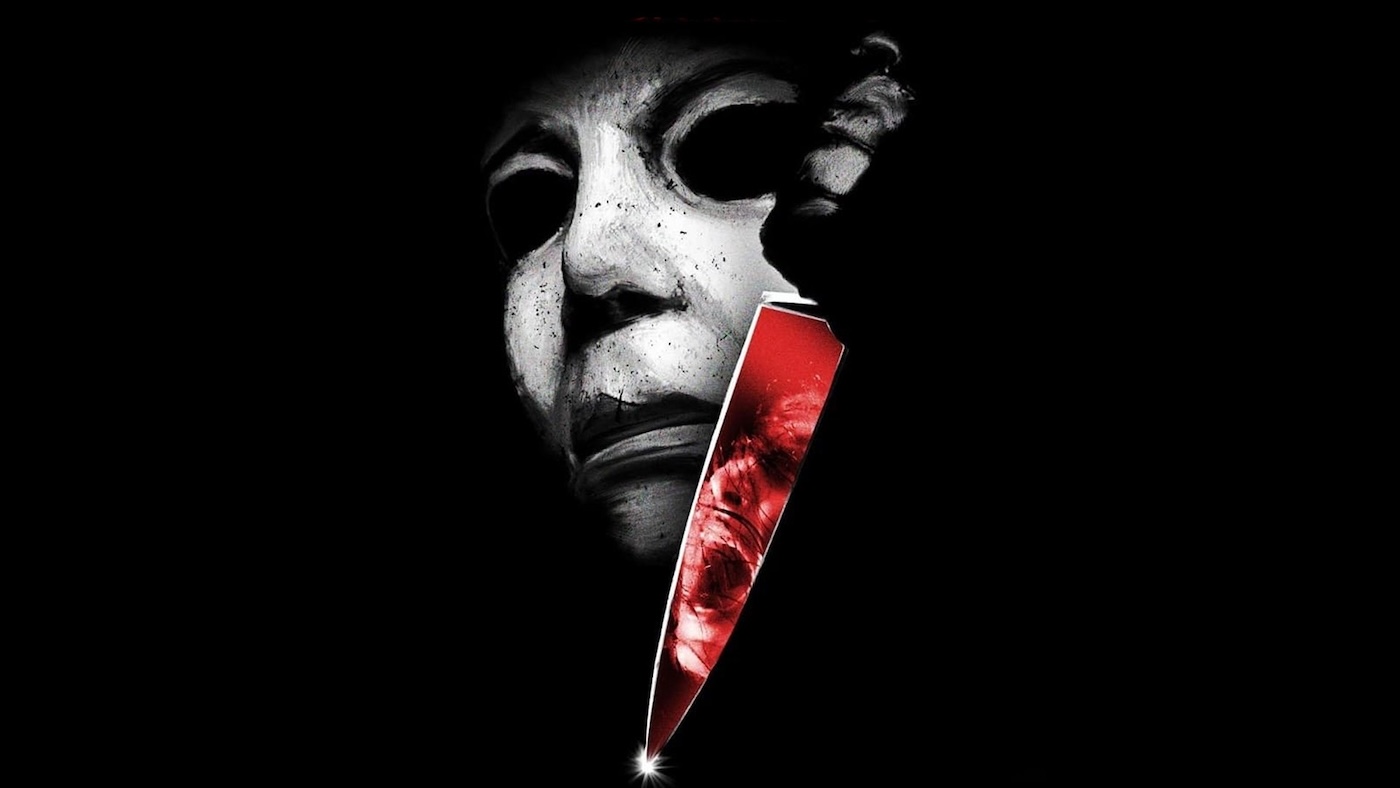
Six years after Michael Myers last terrorised Haddonfield, he returns in pursuit of his niece, who escaped with her newborn child...

A good slasher film disturbs your sense of normality. Halloween (1978) is the sacred text for transporting the viewer to a familiar suburban adolescence invaded by a violent menace. That film leaves us re-examining the dark corners of our homes and neighbourhood and whether that local killer really was the boogeyman. Halloween: The Curse of Michael Myers follows three sequels hammering home that Michael is an unstoppable personification of evil who will never stop his Terminator-like pursuit of ending his own bloodline. Halloween 6 is one of several sequels that attempt to answer why he does that. None of it’s normal.
Wasting no time, the nostalgically familiar is waylaid by pregnant women screaming down underground candlelit lairs with druidic baby rituals parsed through MTV-style editing. All while a young Paul Stephen Rudd narrates the life of Michael Myers. Or maybe it was Donald Pleasence. Curse is so unorthodox you may not even be watching the same version…
Slashers of yesteryear had the novelty of skimping on the little details because who would remember them from their theatrical release? Well into the home video era, fans could wear out their VHS tapes, keeping track of every inconsistency and expecting the next entry to honour that effort. Ask half of those for-hire directors and they admit to never having seen any of the films before taking the pay cheque.
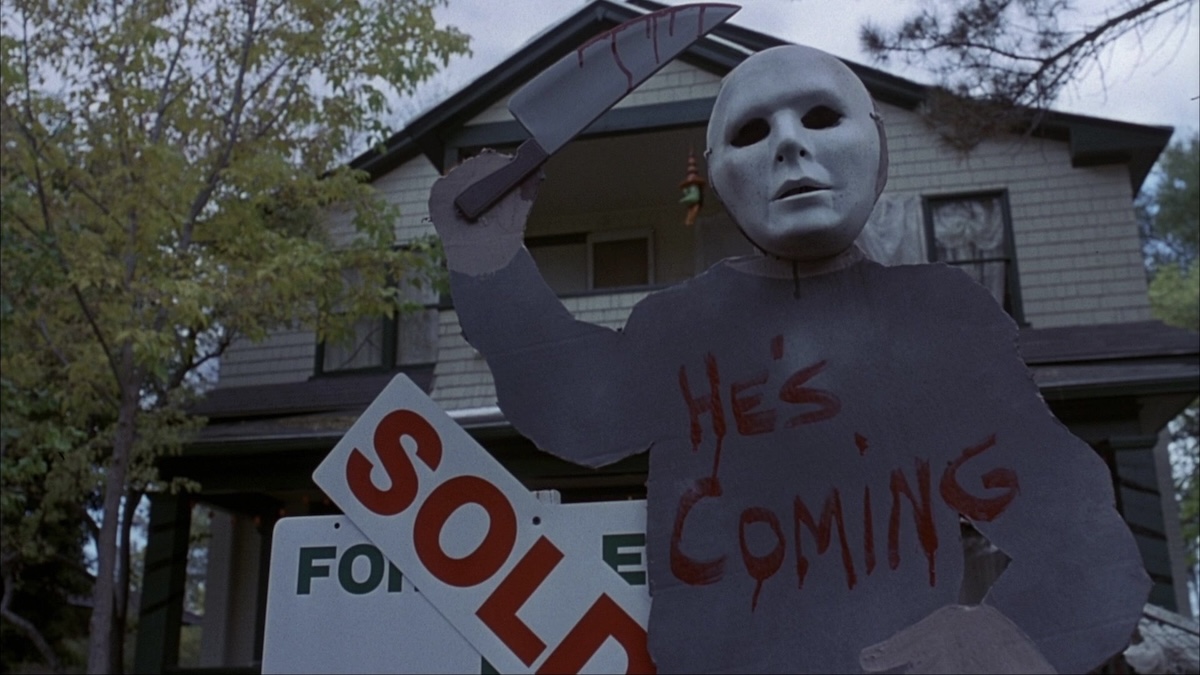
This newborn is whisked away by the mysterious Man in Black, first seen in the last sequel rescuing Michael from prison. Halloween 5: The Revenge of Michael Myers (1989) director Dominique Othenin-Girard felt he could be Michael’s twin brother or alter ego. Franchise producer Moustapha Akkad, halfway through shooting, didn’t think any deeper than for him to be a hook to get people back in for Halloween 6. He left it up for the next poor for-hire schmuck to figure out.
But with the lowest attendance rate to date, Akkad should’ve thought more on how to get people back in for Halloween 5. Disappointed, he let the rights lapse, leading to a bidding war between John Carpenter in league with New Line Cinema and the Weinsteins with Dimension Films. ‘The House That Freddy Built’ adopting Michael was not to be. Akkad, with producer Paul Freeman, chose Dimension Films and brought along a recent screenplay they had received by one of those very fans with worn-out VHS tapes.
“I picked up this Hollywood Creative Directory. I found Moustapha’s company listed. I wrote what basically amounted to a fan letter explaining my knowledge of and passion for the series, and that I had a horror script I would like to submit to him. I received a call maybe a week later. they were looking for a writer for 6 which he said they planned to get started on right away. He told me to send him a writing sample of mine. Maybe a week or two later, he had read my script, thought it was great, and that he wanted me to come in. This can’t be happening. It can’t be this easy!”—Daniel Farrands, screenwriter.
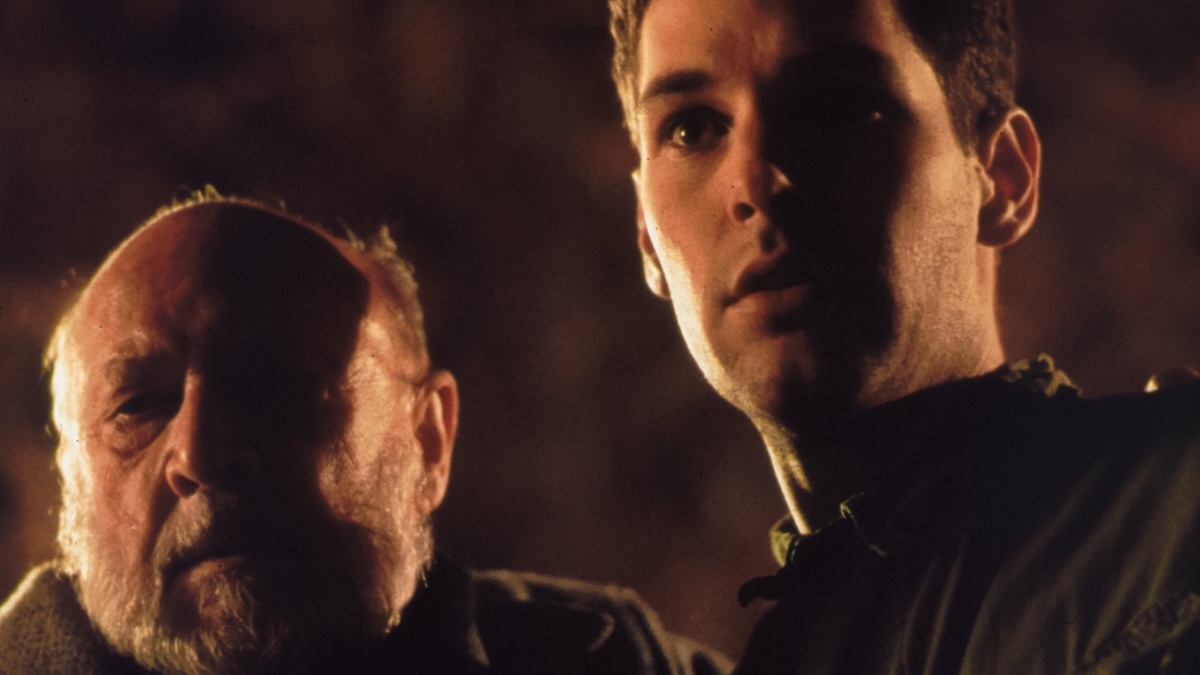
Farrands came prepared. He had binders of lore, like a red-string evidence board with loose ends, from Tommy Doyle (Brian Andrews) of Halloween to the druidic cults of the otherwise standalone Halloween III: Season of the Witch (1982). All of it bound in a town-wide conspiracy to bring back the old ways of Samhain. The scale of returning and original characters still reflects that restrained ambition. Pleasence gave an on-set interview, describing the script as “one of the best” he’d read, and that wasn’t limited to Halloween titles. His Columbo episode might be better. Rudd certainly has some heavy lifting in the opening exposition as Tommy, “believing” that some people are secretly controlling Michael Myers—an idea that absolutely nobody had ever considered until then.
Farrands gives audiences the familiar early on, with the young mother who is instantly stalked by Michael. Her pleas, calling into a radio station, are heard by Tommy (Rudd) and Dr. Loomis (Pleasence). Meanwhile, Kara Strode (Marianne Hagan) attempts to ease her child Danny’s (Devin Gardner) nightmares of a man in black. All these disparate threads are interwoven in a cat-and-mouse sequence that stretches the entire first act. People have dubbed Weapons (2025) the horror Magnolia (1999), but Chappelle beat Paul Thomas Anderson by four years. Even more taxing for Halloween fans is coming to terms with this new woman being called Jamie. The cap to the fan-dubbed ‘Thorn trilogy‘ features Jamie Lloyd (J.C Brandy), the final girl of the past two Halloween entries. Brandy is not Danielle Harris, the lead actress of the past two Halloween entries.
After Halloween 5, Harris and her family moved to Los Angeles to pursue more work. She found a casting call for an actress who resembled Danielle Harris. Her headshot was being used for a new Jamie in the sequel, one old enough to avoid child labour laws. It took multiple court appearances and $3,000 in legal fees for Harris to emancipate herself, and she got her first taste of adulthood when Dimension Films offered her $1,000. During this, she began receiving updates on the script. “Everything started to change. I’m pregnant with my uncle’s baby? I don’t want Jamie to die like this,” she said. Financially and creatively opposed, Harris backed out, but Farrands has remarked that the silver lining is she still got paid residuals as she appears in flashbacks.
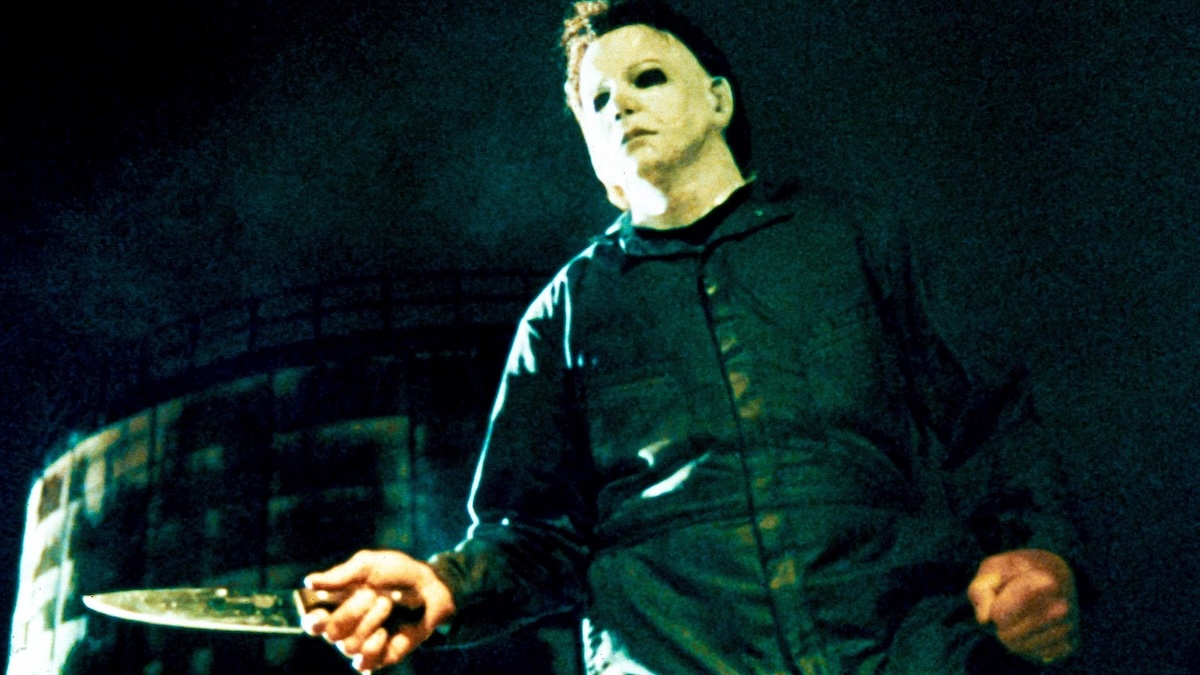
What pregnancy and death she rejected is debatable given the eleven drafts of Curse and how many of those were before the on-set rewrites. The Weinsteins had their claws in every stage of production, a tale as old as time, and the young screenwriter and veteran producer fruitlessly defended their original vision. An impressionable new director acquiesced, and Freeman took advantage, rewriting dialogue and action sequences on the day, sending crew home before the day was done, and directing second-unit material himself. Regardless of whose side this was meant to benefit, the impulsive intrusions only provoked drastic reshoots.
Can you tell in the finished product? Absolutely, in either version you watch, as there’s the theatrical release and the once-bootleg Producer’s Cut. Special editions are usually the director’s cut, and given how the Weinstein’s influenced the first version, there are two producer’s cuts of Curse. The first two acts go largely unchanged, save for alternate takes, editing flourishes, and scoring. In the flashier, gorier reshoot that audiences saw in 1995, Jamie is hunted down on a pumpkin farm to a particularly nasty death: she’s impaled on a thresher and then viscerally threshed, as Michael knows how to turn it on. While it feels like a spitefully directed ‘fuck you’ toward their prior star for not reprising the role, this fate is begrudgingly more impactful than the alternative. Jamie surviving the protracted chase is a waste of time, and a pitiful single stab from Michael is anticlimactic. Any fans rejoicing at her endurance are then confounded by her absence as she lies comatose in hospital until an unceremonious execution from the man in black. A thresher seems overkill for Michael, but a silenced handgun has no place in a slasher.
We finally reach the more welcoming Haddonfield, with trick-or-treaters traipsing through autumnal leaves. This pleasant atmosphere is cut short with the extended, dysfunctional Strode family. An abusive patriarch is low-hanging fruit, but the entire household is transparently thrown in for an excessive body count. The Producer’s Cut offers extended moments of genuine familial bliss and fares better in rounding out characters, no matter how inessential they all are. Protagonists get the expected grace and sensitivity of the Weinsteins, with Kara Strode undressing in front of a mirror while the radio takes a caller infatuated with the boogeyman Michael. Hagan has since stated that she persevered through on-set criticisms of being “too thin” with her chin “too pointy”, while having to act only mildly surprised and not at all upset her neighbour Tommy is ogling her through a telescope.
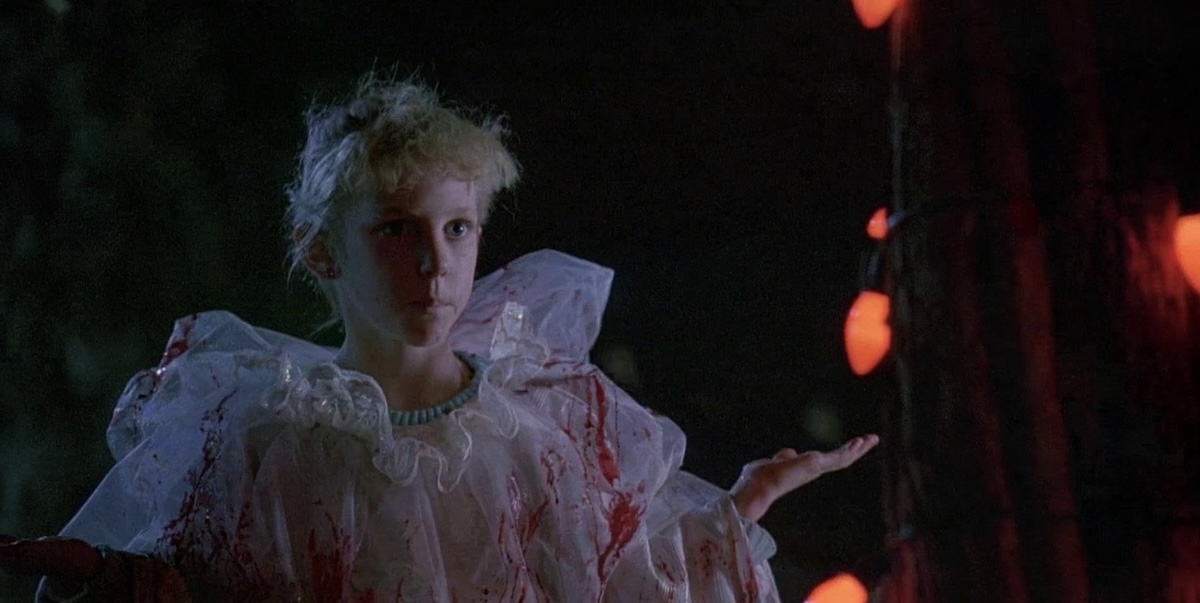
Creepy yet “harmless”, Paul Rudd tackles his first feature film role with the same subtle nuance as in Wet Hot American Summer (2001): dumbfounded pantomime dripping in sarcasm. Leaning into the weirdness with what might be a terrible Pleasence impression, this only suits the material as Tommy invites Kara over to ramble about ancient runes and constellations driving the evil inside Michael. His introverted astrology is all the more bewildering with the lack of contrast opposite the checked-out Kara—uninterested in why this conspiracy nut is now caring for a baby he found in a bus station. And in case his acting appears insincere, you can enjoy knowing he tried his best.
“When I first saw Halloween 6, Oh God, this movie’s not good, and I was really kind of bummed out. I remember thinking, this is the one that’s going to be different! [laughs] I thought it was really, really fun. But then I thought, are people going to think I’m a joke? Am I ever going to get work as an actor after this comes out? I have since changed my tune; I love it. I couldn’t be happier that I can say that my first movie is a Halloween movie.”—Paul Rudd, Tommy Doyle in Halloween: The Curse of Michael Myers
The second act is largely unchanged as characters either drift from location to location to figure out what’s happening or stay put out of fear of anything happening. The Strodes inevitably all meet Michael, who may or may not be fulfilling his mission in killing them. If they’re in the way of the baby, Danny, or Kara, is anyone’s guess. The downtrodden mother (Kim Darby) doesn’t deserve an axing, the abrasive father (Bradford English) lazily earns his head explosion, and the brother (Keith Bogart) gets sliced alongside his girlfriend (Mariah O’Brien). The Producer’s Cut bizarrely messes with the rare improvement, cutting dad’s killing back down to the less satisfying electrocution. One step forward, two steps back for audience enjoyment.
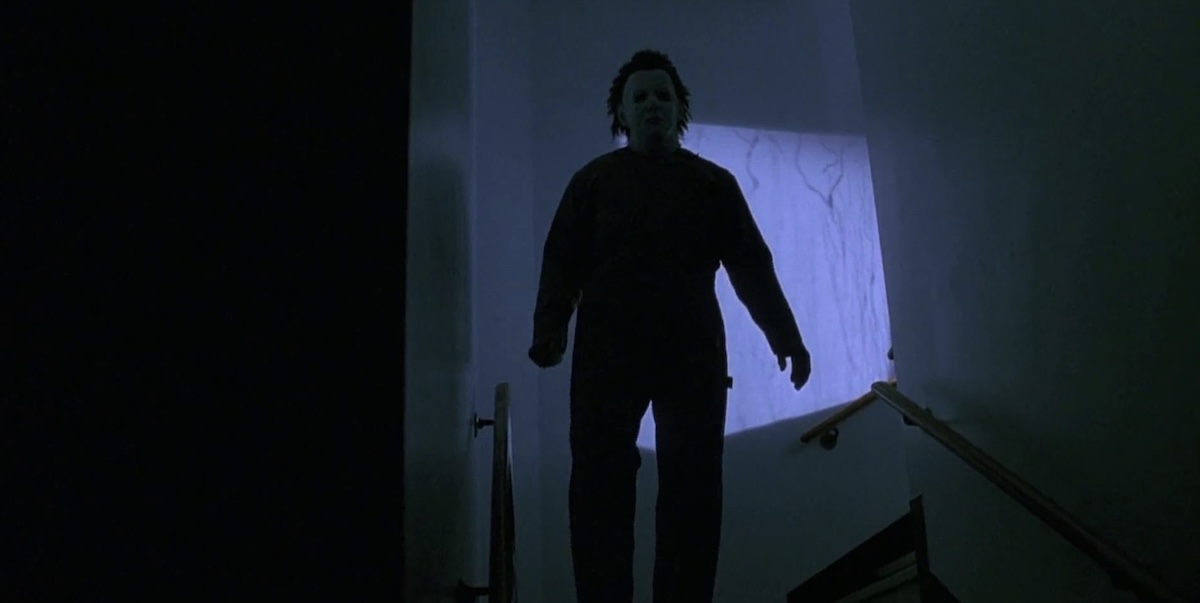
It’s that double teen kill where the iconic Halloween theme finally kicks in, at least theatrically. By this point in the Producer’s Cut, I was actually sick of it, with Alan Howarth’s recreation of the original’s entire John Carpenter score played incessantly over every single scene. It’s sacrilege to bemoan too much of a good thing, but it only serves to remind audiences this is a pale imitation of something we could be watching instead. I even prefer the aggressive wailing guitar rendition by Howarth and Paul Rabjohns—anyone who derided this approach must’ve felt a touch hypocritical when praising Carpenter bringing the exact same sound to David Gordon Green’s trilogy.
With Michael busy stringing up shock jocks in trees, the young protagonists and their younger deuteragonists meet up with Loomis and his colleague Dr Wynn (Mitchell Ryan), an old friend who briefly appears in the first with a different actor (Robert Phalen) and, though not explicit, an incredible follow up to a rhetorical question thrown out by Loomis on Michael driving away in 1978: “Maybe someone around here gave him lessons!” Turns out it was Dr Wynn, as he’s the man in black! Need to know why he planned all this? This is where the film becomes a choose-your-own-adventure, and both choices are bad.
Wynn explains that evil itself can be scientifically manipulated with modern medicine, revealing the child is the first successful test-tube baby to recapture the lightning-in-the-bottle that is Michael Myers. Wynn also explains that through ancient druidic runes, ritual familicide could, er, do something. I think they’re just evil in this one. Wynn wearing a Dracula cape may have given that away. That’s backed up with the perverse twist of Kara pleading for Michael not to murder his own child, but then Farrands refutes his own weird addition that it’s meant to be symbolic, not literal. Paul Rudd is lucky to still have a career built from two incestuous films in the same year.
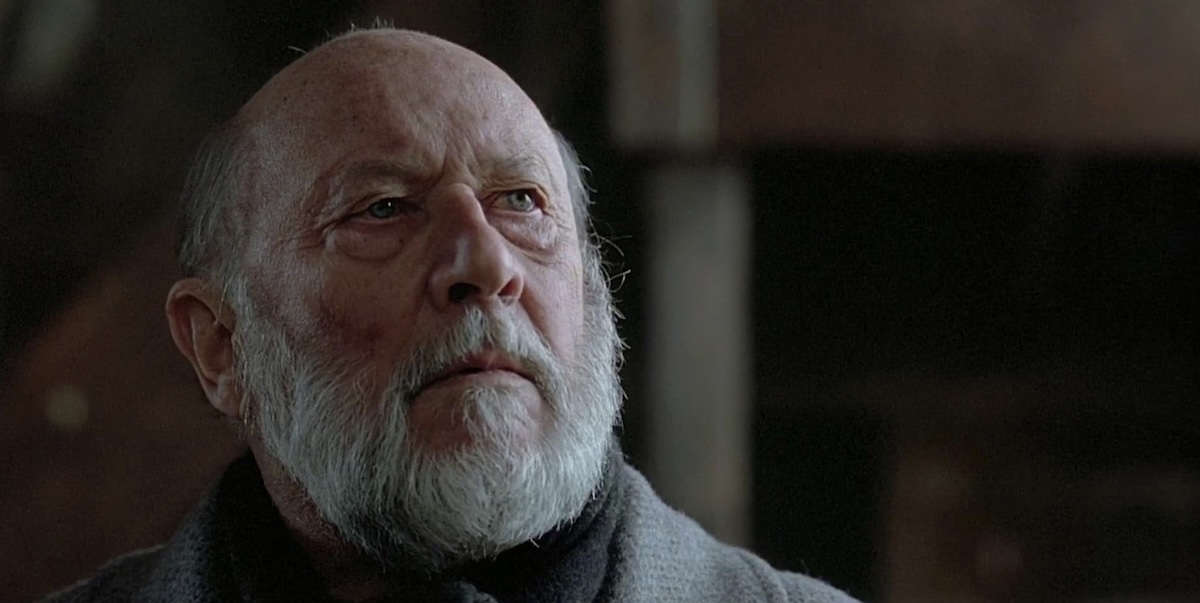
Two entirely different third acts—one science and one magic—and neither of them feels like Halloween in the slightest. Audiences in 1995 were met with the banality of evil as Wynn remarks, “Halloween is over,” discarding robes for scrubs. A novel yet brief diversion, as their presumptions of controlling Michael go as well as Jurassic Park (1993) with a brutal, seizure-inducing, strobe-lit massacre. Michael’s defeat is equally banal with injections of mysterious green goo followed by a thorough pipe bashing. Weird? Yes, but contrast this with the reward for patient Producer’s Cut audiences, who find the heroes easily escape an underground baby sacrifice and best the boogeyman with some pebbles on the floor. The very notion that this human evil can actually be controlled by runes would be disappointing if not for Paul Rudd enunciating “rune” every five minutes being exponentially hilarious.
With no massacre, their escape seems pointless. There’s fundamentally no conclusion: are they going to phone the police? The whole town was in on it. Shouldn’t their comeuppance be in the movie? Whether the cult lives or dies, Loomis bids these kids farewell and heads back, maybe for some more pipe bashing. Michael’s left his mask and Loomis screams. Bad ending. The other finale finds Michael laying in his circle of runes, except it’s Wynn under the mask. It’s his game now as Loomis screams at the thorn mark on his wrist, all while Michael dressed as the man in black walks off… a fan-written script promising all the answers leaves an impossible mess for Halloween 7.
Whatever fate was in store for Loomis, Curse is in memory of Donald Pleasence, who passed away during reshoots. Halloween H20: 20 Years Later (1998) would ignore the entire Thorn trilogy and take place well after Halloween II (1981). Despite the critical thrashing, The Curse of Michael Myers opened to $7.3M, second to New Line Cinema’s Se7en (1995), and held the largest opening through Dimension Films’ next four Halloween movies, until Blumhouse Productions’ Halloween (2018). On a budget of $5M, Curse had a total box office of $15M. Enough for Dimension to keep Michael trucking, though in a soft reboot, an even sillier sequel, then a hard reboot, and another controversial sequel.
Farrands would see his original intent finally realised and outlast the curse he had put upon himself. Bootlegs from test screenings travelled from VHS to eBay to YouTube until Anchor Bay Entertainment partnered with Scream Factory to bring a fully restored HD release. Before all of that, an original teaser trailer employed the initial title Hᚦlloween 666: The Origin of Michael Myers. Moustapha Akkad asked Farrands for a title, who half-jokingly suggested Curse due to the troubled production. If we can laugh along with Halloween 6, then we can have as much fun with it as Paul Rudd did.
USA | 1995 | 87 MINUTES (THEATRICAL) • 96 MINUTES (PRODUCER’S CUT) | 1.85 : 1 | COLOUR | ENGLISH

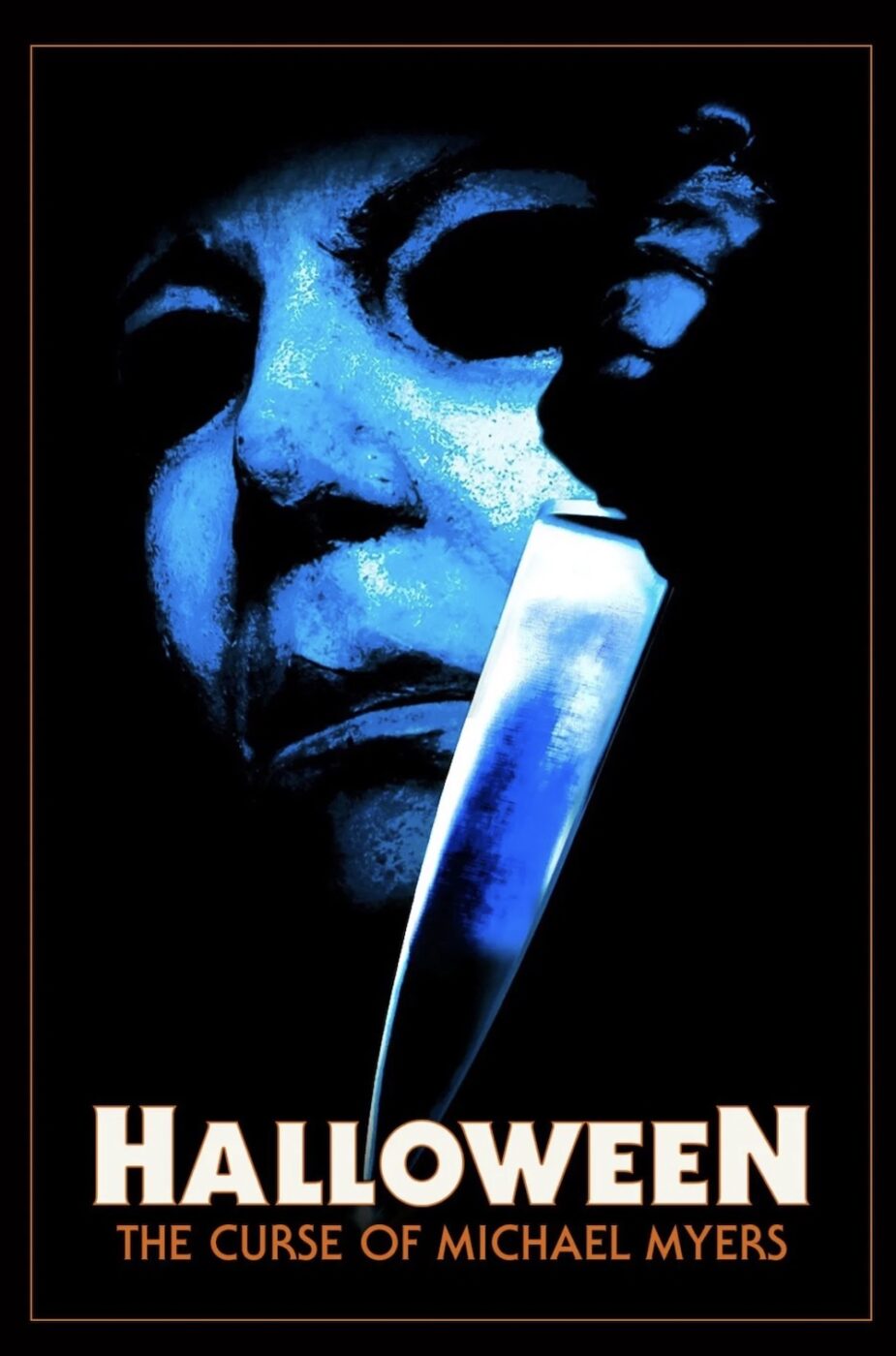
director: Joe Chappelle.
writer: Daniel Farrands (based on characters created by John Carpenter & Debra Hill).
starring: Donald Pleasence, Paul Rudd, Marianne Hagan, Mitch Ryan, Devin Gardner & J. C. Brandy.
